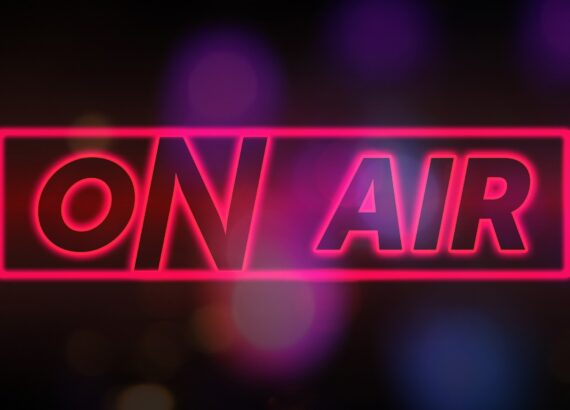Some thoughts on the publication process
Earlier this month, I spoke at a publishing workshop for Ukrainian academics. I thought it would be useful to share those remarks. I included relatively basic information about the publication process, which could be particularly helpful to those new to publishing. Of course, an important caveat is that everything is based on my own experience, and your mileage may vary. But I think most, if not all, of what I say here applies broadly. At least that was the goal. Enjoy!
First, it’s useful to understand what journal editors ultimately want. I’m comfortable claiming that most editors want to publish papers that will be widely read and cited, papers that will make an important impact on the field. Most editors do not become editors because they enjoy rejecting papers. Editors want people to submit good papers to their journals and they want to publish them. Rejection is of course a part of the process because not every paper will be up to the journal’s standards and sometimes there are just more good papers than a journal can publish. But it’s not an editor’s goal. So it’s important to not think of the editor as an adversary.
Another important thing to know is that many journals desk reject a significant number of papers, although the exact proportion varies by field and even within a field by journal. A desk rejection means that an editor has looked at your paper, concluded that there’s no viable path to publication in the journal and rejects it without sending it to reviewers for feedback. This is to save time both for you, for the editor, and for reviewers, many of whom review two dozen or more papers per year for free. If an editor knows that the paper isn’t going to make it, there’s no point in sending it out for review.
How can you avoid getting desk rejected? I don’t have concrete data on this, but I’d bet a lot of money that this decision is often made by only reading the abstract and the introduction or summary of the paper. An editor is very unlikely to get into the details of your paper to make this decision because that would take too long (most editors handle 50+ papers per year, and many handle over 100), and the editor may not be knowledgeable enough in your exact field to understand the details of the methodology. Bottom line is: the decision of whether to send your paper out for review is not the same as a peer review by the editor.
What is the editor looking for in the abstract and introduction? First, that your paper makes a contribution important enough for the journal. This is very subjective, but it’s crucial that you make the best case you can when it comes to your contribution. If you’re relatively new to academia, I suggest asking a more senior colleague in your field to read your abstract and introduction and see if your contribution statement sounds compelling. Unfortunately, a great paper with a poorly written introduction or summary can end up desk-rejected, so be sure you spend a lot of time polishing your introduction.
The editor is also likely to briefly check if your general methodology is appropriate for the journal. For example, if the study is claiming to estimate causal relationship but is using correlational methods, I am very likely to desk reject it at AER: Insights. We also look for papers that advance fundamental knowledge in economics, and we don’t take papers that, for example, represent an example of the application of existing knowledge. Of course, what kinds of methods a journal will consider depends on the journal, so another bottom line is that you should be familiar with what kind of methodologies the journal you are considering publishes.
Another reason you could get desk rejected is if your paper looks sloppy, if there are spelling errors, bad formatting, bad grammar, or unprofessional-looking tables and figures. Your paper should be very polished before you submit it to a journal. You should not view a journal submission as merely a chance to get feedback from some people in your field. If your paper is significantly below the bar, it will just get desk rejected and you will get no feedback and no second chance to submit to that journal. Even if your paper gets reviewed, if it’s put together sloppily, the editor may reject it at that time for that reason. Of course, you don’t need to work on the paper until it’s perfect, but by the time you submit to a journal, it should be thoroughly proofread and made to look as professional as possible.
Let’s assume you made it past the editor’s desk and the editor decides to send out your paper for review. I’d like to explain the referee selection process next. This process will differ depending on whether the journal has an editor who specializes in your field. When I was at JAERE, many of the papers I handled were fairly close to my own research, so I often could think of good reviewers without looking at the reference list.
Now at AER:I, I handle a much wider variety of papers, and in many cases I can’t easily think of good reviewers off the top of my head. In those cases, editors will often look at the papers the authors cite to identify potential reviewers. In general, editors will focus on citations of papers that published in journals of similar or better quality than the journal in question. Editors will usually avoid asking reviewers who have not published in journals of similar or better quality because they may not understand the standard of the journal.
So it’s very important to consider which papers you cite and make sure you’re citing papers of similar quality as the journal you’re aiming for. Of course, you should not cite papers that are irrelevant because that is likely to backfire. Editors understand that authors may cite papers strategically to get or avoid certain reviewers or to make their paper look more important. And if it looks to the editor like you’re trying to do this, at the very least they will have a more negative impression of you and the paper from the start. At worst, it can get your paper desk-rejected. So consider your citations carefully but be reasonable.
If you have a hard time thinking of citations from academic journals that are of similar or better quality, it’s worth asking yourself why this is the case. A good reason would be that no one has done what you’re doing nearly as well as you, and your paper is groundbreaking. But it may also be that the journal you’re aiming for is not interested in those kinds of studies in general, and you may have a better chance at a different journal.
But even if you have the perfect set of citations, don’t assume you know who your reviewers will be or are. Maybe the editor knew a good reviewer that you didn’t cite. Or maybe they asked someone you cited but that person was unavailable and recommended someone else instead. This happens fairly often, so you should never count on having a specific person review your paper.
What happens to papers when they come back? Of course, an editor’s decision will depend on what the reviewers think about the paper, but the publishing process is not a democracy. So if two reviewers recommend giving the paper a “revise-and-resubmit” and one reviewer says “reject”, the editor is not obligated to give the paper a revise-and-resubmit. Authors often think of reviewer recommendations as votes, but they are not. Sometimes the reviewer recommending rejection will notice a major flaw in the paper that the other reviewers missed and of course the editor is likely to reject the paper in that case. The positive reviewer may also have been a relatively inexperienced academic while the negative reviewer is a more experienced one. In general, it’s not uncommon to have some reviewers recommend revise-and-resubmit and get rejected. It’s less common to have the majority of reviewers be enthusiastic and have the paper be rejected, but it does happen.
Sometimes it’s not clear why you got rejected because the reviewer comments seem addressable. There are several possibilities why. Of course, it could be a bad editor. But more likely, the reviewers wrote something in the cover letter to the editor that they did not write in the report. For example, they may think your paper doesn’t make a sufficient contribution for the journal but didn’t want to write that in the report because it’s a subjective viewpoint. It could also be that there are just too many flaws, and the editor doesn’t think you can fix them all. Some editors try to be nice in their rejection letters and will write very vague reasons for rejection, such as “I don’t see a path to publication in this journal.” It doesn’t mean the paper was rejected for no good reason but unfortunately you will just have to guess what the reason was. If it’s not clear, I think the most likely reason is an insufficient contribution or just too many problems with the paper to give it a revise-and-resubmit. This is another reason to polish your paper and ensure that you try to present your contribution as strongly as possible.
If you get rejected, it’s important to not take it personally and try to look at the reports and editor decisions objectively. Hopefully, all of us are proud of the work we’ve done in our papers, so of course it’s natural to feel defensive and think that the reviewers and editor just didn’t understand how great our paper was. It may even be that it’s very clear that the reviewers and editor didn’t understand something about your paper. It’s tempting to ignore such confusion and move on, but instead you should assume that the misunderstanding is your fault. We of course understand our work very well and it can be hard to see that we didn’t explain something clearly. Assume the confusion is your fault and look for ways to clarify in the paper.
At the same time, if you are rejected, you should not treat the reviewer comments as something that you must address 100%. My general rule is that you should never send the paper to another journal without changing something in it unless it was a desk reject (and even then, it may be worth making some edits). If the paper went out for review, you should think about what reviewer comments may come again and address them if it’s not too difficult. Otherwise, you may get the same reviewers again, and they may feel insulted that they made good points about your paper and you just ignored them. At best, you will get the same reviewer comments again and perhaps another rejection, if it’s a similarly ranked journal. At worst, the reviewers will be even more negative about your paper. Even if you get a different set of reviewers, they may bring up similar comments. So spend some time improving your paper based on reviewer comments before sending it back out. But in most cases, you shouldn’t try to fix problems that take months to fix, like running another experiment.
Finally, let’s end on a positive note. Suppose you get a revise-and-resubmit. Then the direction is clear in most cases: you should do everything the editor and reviewers want you to do unless the editor has specifically told you to ignore something. And make it very easy for reviewers to see what has changed. The way this is done in most fields is you prepare a reply document where you copy-paste the editor and reviewer comments, one at a time, and then you write your reply underneath them. Put in copies of new tables and figures into the reply document and also sections of new text, as long as they are not too long.
Sometimes reviewer comments contradict each other and the editor doesn’t specify whose recommendation you should follow. For example, maybe one reviewer said you should remove part of the paper and another reviewer said you should elaborate on what’s in there. In this case, you should not try to guess what the editor was thinking and just email him or her to clarify how you should address the contradicting comments. You should not email an editor too much in general, but remember that if the editor gave your paper a revise-and-resubmit, he or she wants to publish the paper. So if the editor did not give you clear enough instructions, they should be happy to clarify.
Happy publishing!




Comments are closed.